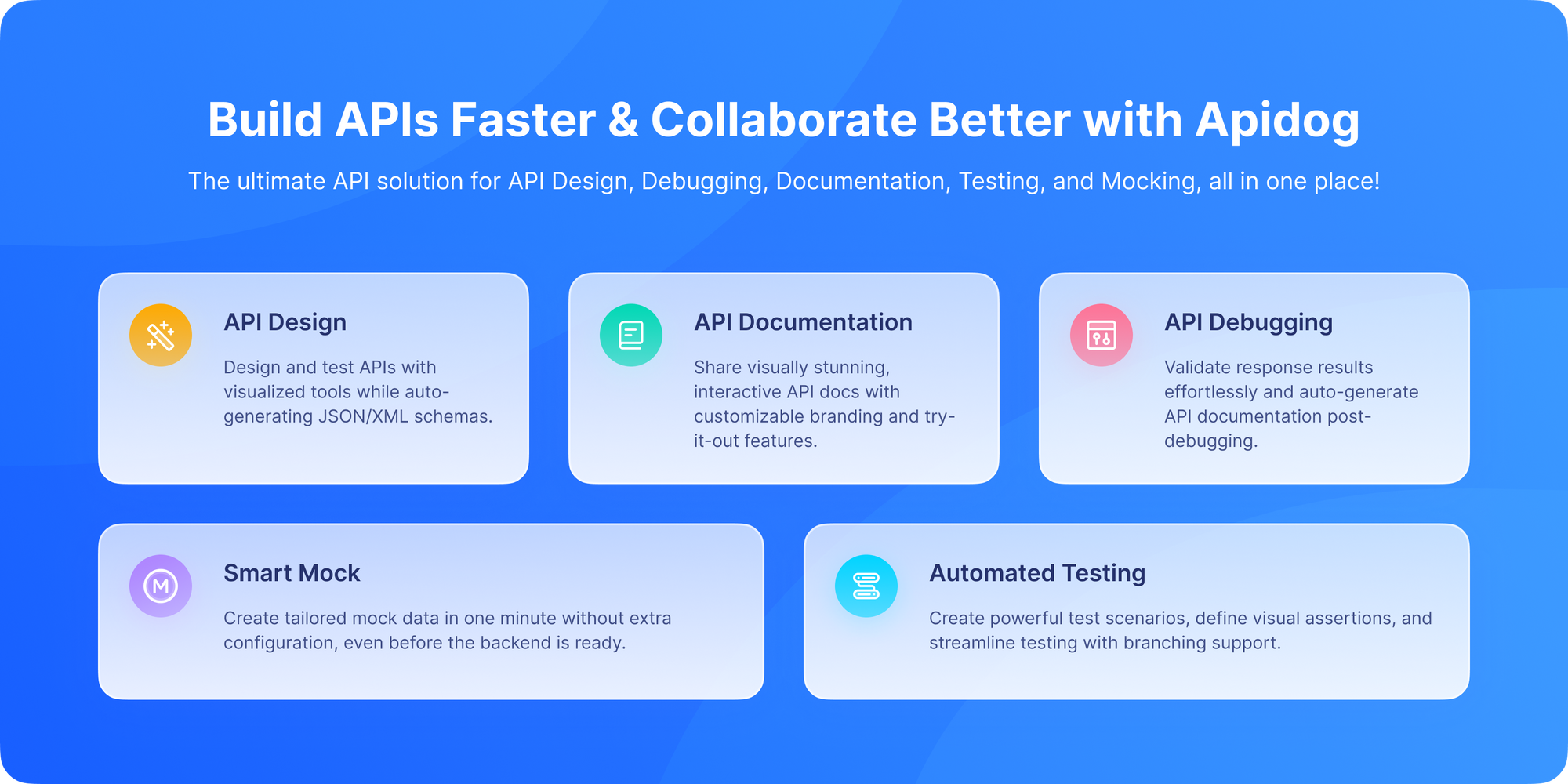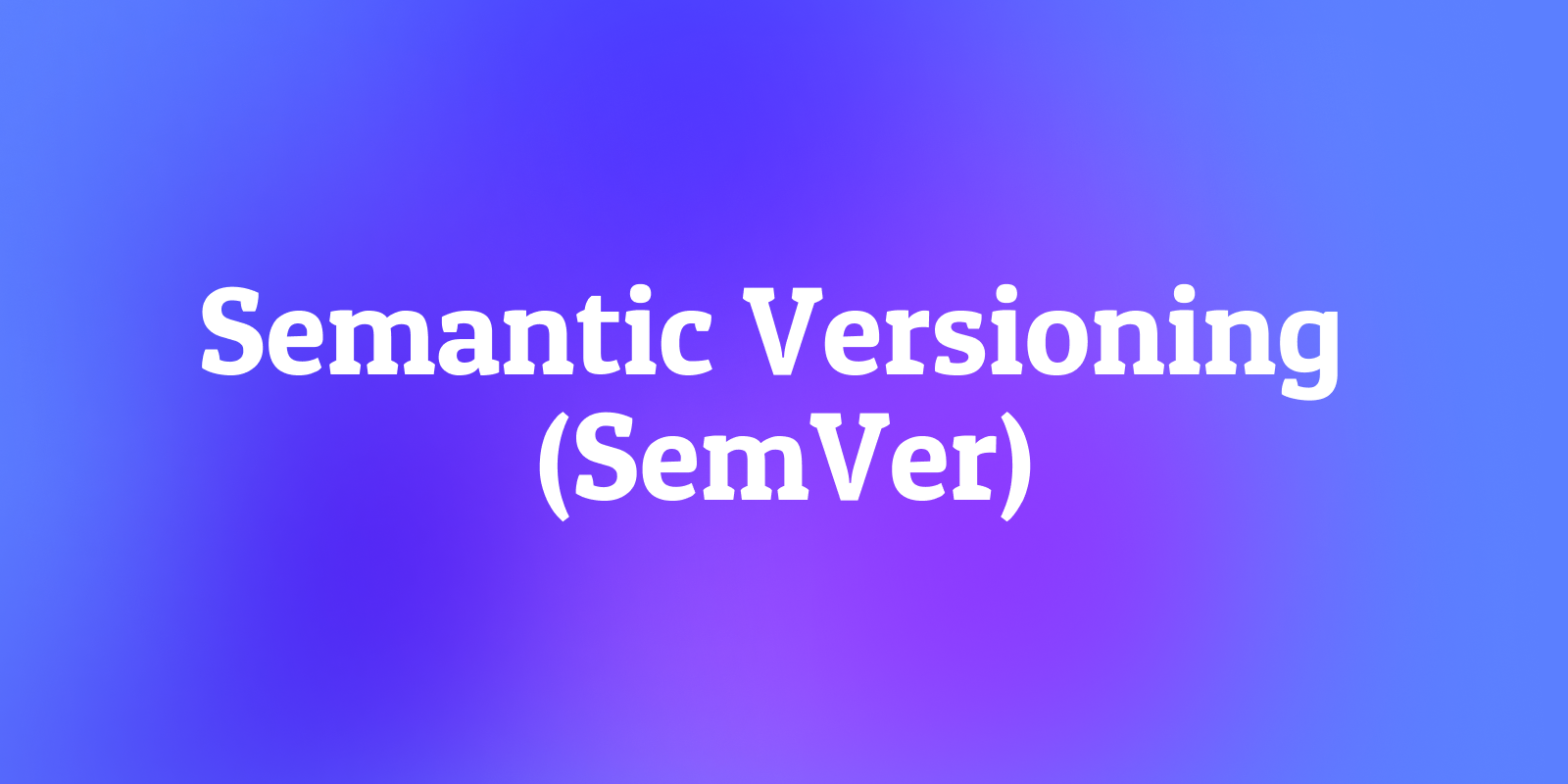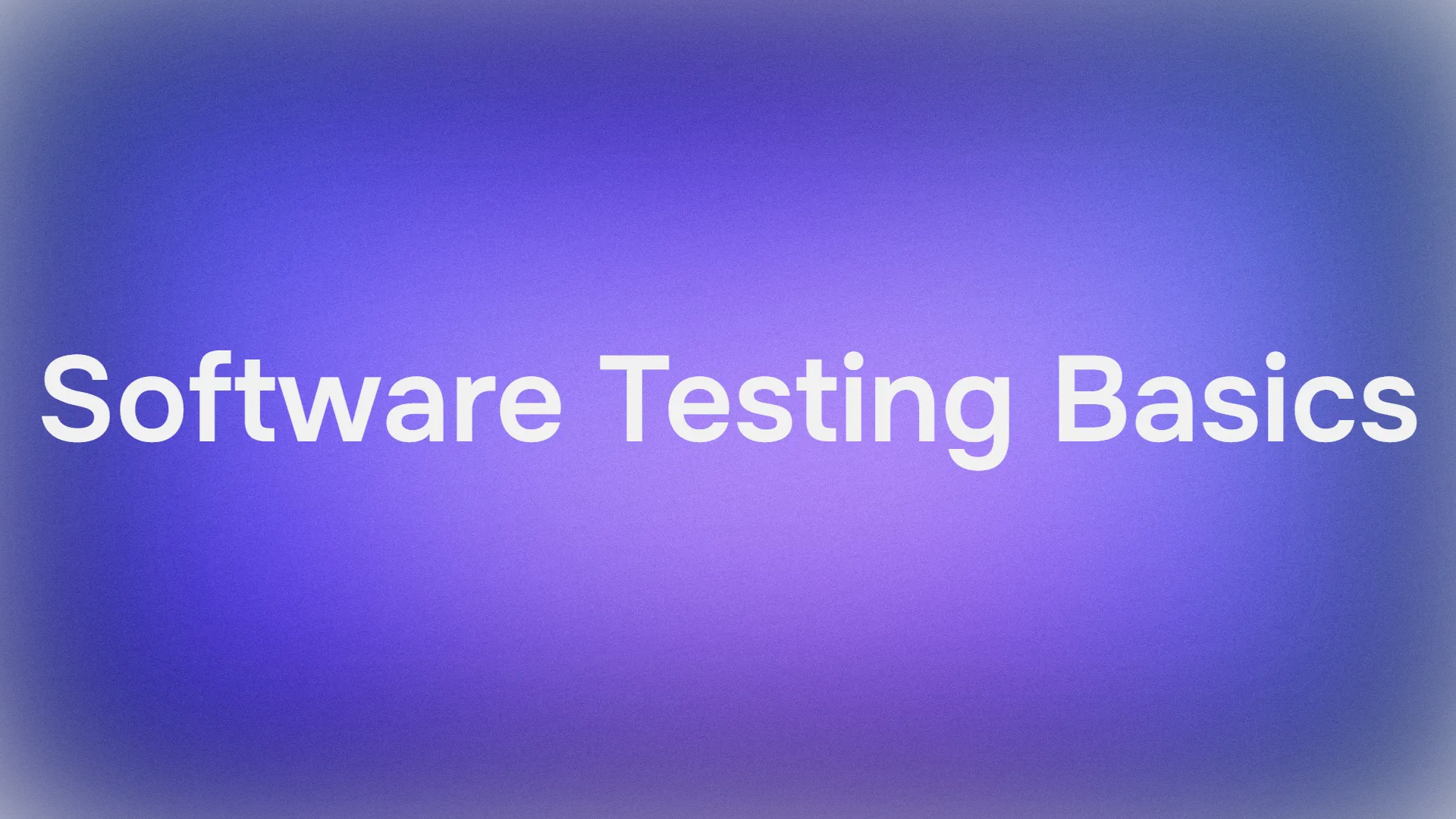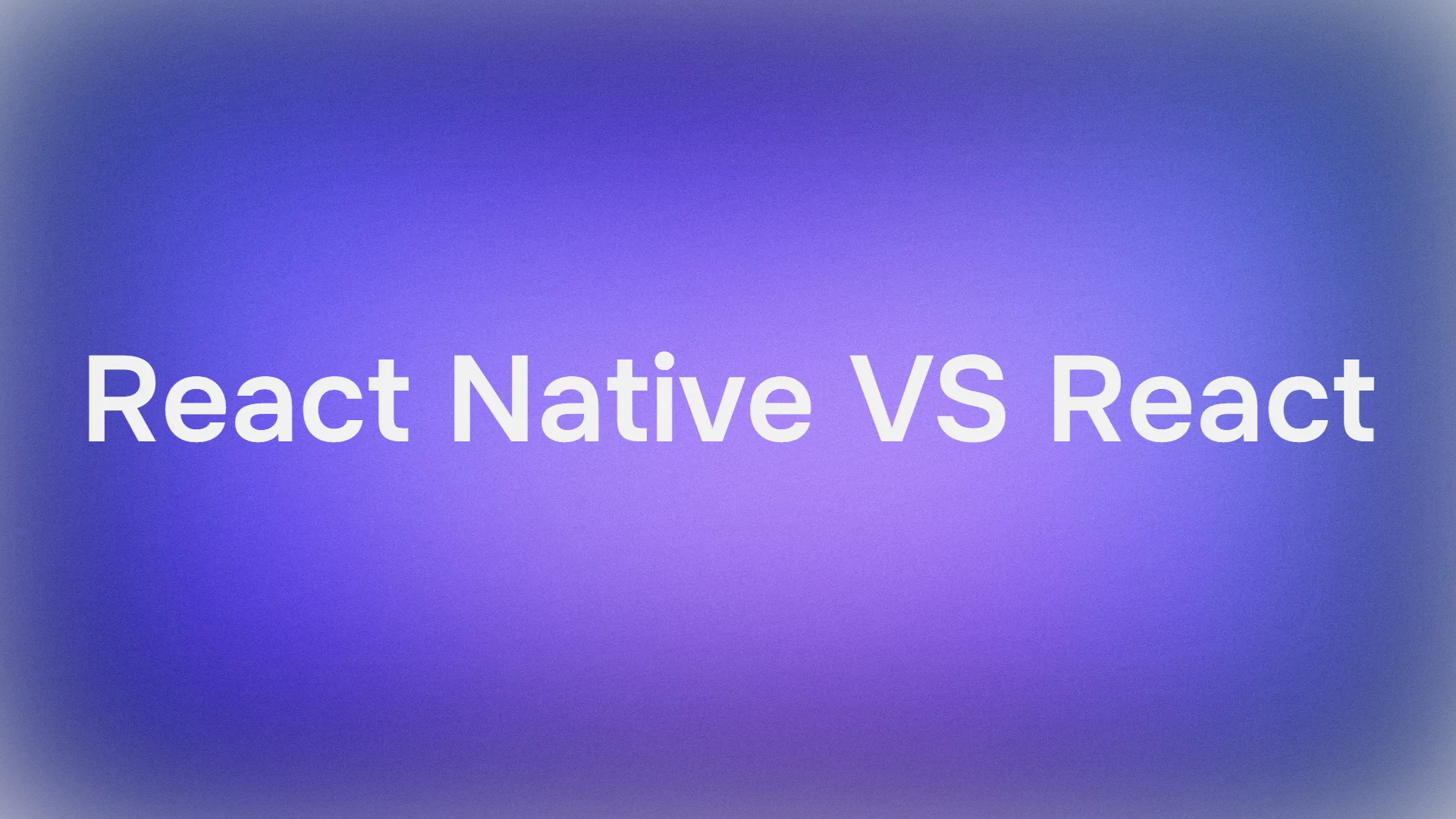You're integrating a cool new open-source library into your project. You check its GitHub page and see two versions available: v1.2.9 and v2.0.0. Which one do you choose? The bigger number must be better, right? You update your dependency to v2.0.0, run your code, and... everything breaks.
Sound familiar? You've just experienced the chaos that semantic versioning is designed to prevent.
Version numbers shouldn't be a mystery. They shouldn't be marketing gimmicks where a project jumps from version 4 to version 95 because it sounds cooler. In the world of software, and especially APIs, version numbers are a contract, a promise, and a communication tool.
That's where Semantic Versioning (often shortened to SemVer) comes in. Semantic versioning is not just about numbers, but about communication. It tells developers what to expect when they upgrade, whether a new version introduces breaking changes or it's just a bug fix. It's a simple set of rules and requirements that dictate how version numbers are assigned and incremented. These rules are based on how the software changes, not on a developer's whim.
And before we dive into the specifics, if you're building or consuming APIs, which are the ultimate form of a promise between systems, you need a tool that helps you manage and honor that contract. Download Apidog, an all-in-one API platform that helps you design, mock, test, debug and document your APIs, making it easier to track versions and ensure your changes are always SemVer-compliant.
Now, let's demystify those three little numbers and learn how to speak the language of trust in software.
Introduction to Versioning in Software
Every software project evolves. Developers add new features, fix bugs, and occasionally make significant changes that alter how the system works. But how do you communicate these changes to users? That's where versioning comes in.
Without versioning, it would be chaos. Developers wouldn't know if updating a dependency would break their project. Teams couldn't coordinate properly. And businesses wouldn't know what risks come with upgrading.
What Is Semantic Versioning?
Semantic versioning (SemVer) is a versioning system that gives meaning (semantics) to version numbers. Instead of random numbering, it follows a standardized structure:
Each of these three numbers tells developers something important:
- MAJOR version (
X.0.0): You increment this when you make incompatible API changes. This is a big deal. It's a warning that if you upgrade, things will probably break, and you'll need to change your code. Think of it as changing the screw thread pattern. - MINOR version (
1.X.0): You increment this when you add functionality in a backward-compatible manner. This is the "new features" number. You can safely upgrade to a new minor version, and your existing code will still work. It's like the screw manufacturer adding a new, longer screw length to the same product line. Your old screws still work, and you have a new option. - PATCH version (
1.0.X): You increment this when you make backward-compatible bug fixes. These are the smallest changes, intended to fix things that weren't working as intended without changing any functionality. It's like the manufacturer fixing a cosmetic defect on the screw head. You can upgrade without a second thought.
For example:
2.3.1→ Major version2, minor update3, patch1.1.0.0→ First stable release.0.x.x→ Pre-release versions, not considered stable.
The Structure of Semantic Versioning (MAJOR, MINOR, PATCH)
Let's break it down more clearly:
- MAJOR version (X.0.0)
- Increased when there are breaking changes.
- Example: moving from Angular 1.x to Angular 2.x.
- MINOR version (0.X.0)
- Increased when new features are added without breaking existing ones.
- Example: a library adds new API methods that don't disrupt old ones.
- PATCH version (0.0.X)
- Increased when fixing bugs or small issues.
- Example: fixing a typo, resolving a small bug in the code.
So when you see version 4.5.2, you immediately know:
- Major version is
4. - It has had five rounds of new features.
- It's currently on its second patch.
The Formal Rules: More Than Just Numbers
The SemVer specification (found at semver.org) is a short and readable document. Beyond the MAJOR.MINOR.PATCH pattern, it outlines some crucial rules that make the system work:
- Software using SemVer MUST declare a public API. This could be documentation, code itself, or a formal specification. You can't have a contract if the terms are secret.
- Version 1.0.0 defines the initial public API. The moment you release to the public, you start at 1.0.0. Pre-release versions (e.g.,
0.8.3) are considered unstable and are not bound to these rules. - Once a versioned package has been released, the contents of that version MUST NOT be modified. Any changes must be released as a new version. This is why you see patches for ancient versions. If there's a critical security fix for v1.2.1, it's released as v1.2.2, not an update to the v1.2.1 files.
Why Semantic Versioning Matters
Semantic versioning is not just a convention it’s a contract between developers and users.
It matters because:
- It reduces surprises. Developers know what to expect when upgrading.
- It encourages trust. Teams can rely on predictable version updates.
- It improves collaboration. Multiple teams can work with confidence on dependencies.
- It saves time. Less trial and error when figuring out what broke after an update.
Pre-releases and Build Metadata: Advanced Labeling
Sometimes, the three numbers aren't enough. SemVer allows for labels to provide even more information.
Pre-release Versions: You can append a hyphen and a series of dot-separated identifiers to denote an unstable, preview version.
2.0.0-alpha: An early preview for testers. Unstable.2.0.0-alpha.1: A new iteration of the alpha.2.0.0-beta: More stable than alpha, but still not production-ready.2.0.0-rc.1("Release Candidate"): Potentially the final version, released for a final round of testing.
Build Metadata: You can append a plus sign and identifiers to denote build information. This is ignored when determining version precedence.
2.0.0+build.202308212.0.0+exp.sha.5114f85
These labels are incredibly useful for managing complex release cycles and gathering feedback without breaking production applications.
The Benefits of Adopting SemVer
Using SemVer isn't just a technical choice; it's a cultural one that builds trust.
- It Manages User Expectations: A user sees
v2.5.1 -> v2.6.0and thinks, "Great, new features! I can upgrade safely." They seev2.6.0 -> v3.0.0and think, "Okay, this will require work. I need to read the changelog and plan this upgrade carefully." The version number itself communicates the effort required. - It Enables Safe Dependency Automation: Modern development tools like npm, pip, and Bundler can use SemVer to automatically update dependencies. You can tell them "get me the latest patch version" (
~1.2.0) or "get me the latest minor version" (^1.2.0) and be reasonably confident your app won't break. This is powerful. - It Forces Better Software Design: The discipline of thinking "is this change breaking?" forces developers to consider the public API and the impact of their changes on users. It encourages backward-compatible design and cleaner abstraction.
- It Creates Trust: When users see a project that rigorously follows SemVer, they trust the maintainers. They know they won't be blindsided by breaking changes in a minor update. This trust is the foundation of a healthy open-source ecosystem or a successful public API.
Examples of Semantic Versioning in Real Life
You'll see semantic versioning everywhere:
- Node.js: follows SemVer strictly.
- React: uses semantic versioning to indicate breaking UI changes.
- APIs: many APIs include version numbers in their endpoints like
/v1/or/v2/.
Example:
- Upgrading from React 16 to React 17 means no breaking changes for end users.
- Upgrading from React 17 to React 18 introduces new features (like concurrent rendering).
Semantic Versioning for APIs
Semantic versioning is especially important for APIs.
When you change an API:
- If you add a new endpoint (backward compatible) → bump MINOR.
- If you fix a bug in response format → bump PATCH.
- If you remove or alter endpoints (breaking change) → bump MAJOR.
This is why tools like Apidog are so useful. With Apidog, you can:
- Document API versions clearly.
- Test different versions before deployment.
- Mock responses for both old and new versions.
SemVer and APIs: A Match Made in Heaven
Nowhere is SemVer more critical than in the world of APIs. An API is a public contract. Breaking that contract has immediate and severe consequences for your consumers.
- API Endpoints: Adding a new field to a response is usually a MINOR change. Removing or renaming a field is a MAJOR change.
- Parameters: Adding a new optional query parameter is a MINOR change. Making an optional parameter required is a MAJOR change.
- Authentication: Changing how auth works is almost always a MAJOR change.

This is where a tool like Apidog becomes essential. Apidog helps you manage this contract:
- Design First: You can design your API endpoints and their responses before writing code, establishing the contract upfront.
- Documentation: Apidog automatically generates beautiful, interactive documentation for each version of your API, so consumers always know what to expect.
- Test: You can write tests to ensure that your API endpoints adhere to their versioned contract. Did a change accidentally break a response for v1? Apidog can catch it before you deploy.
- Mock Servers: You can even mock different versions of your API, allowing consumers to build against a future v2 API while the current v1 API remains live.
Apidog provides the tools to not just promise semantic versioning, but to enforce and manage it effectively.
The Challenges and Pitfalls of SemVer
SemVer is a guideline, not a magic bullet. It has its pain points.
- It's a Social Contract: It relies on humans to correctly interpret the scope of a change. Is fixing a bug that also changes the behavior of an edge case a patch or a breaking change? Sometimes the line is blurry.
- Version Lock and Version Promiscuity: Without care, developers can become too conservative (locking to a specific version and never updating, "version lock") or too reckless (always using the latest version, which can lead to breaks, "version promiscuity"). The
^and~operators are the best practice to find a middle ground. - It Doesn't Solve All Problems: SemVer doesn't communicate performance changes, the severity of security patches, or the quality of new features. You still need a detailed CHANGELOG.md file to provide that crucial human context.
Semantic Versioning vs Other Versioning Approaches
Other approaches include:
- Calendar versioning (CalVer) → e.g., Ubuntu 20.04.
- Sequential numbering → e.g., Windows 7, 8, 10.
- Date-based releases → e.g., Chrome (rapid release cycles).
Compared to these, semantic versioning offers clarity about compatibility.
Best Practices for Using Semantic Versioning
1. Start at 1.0.0: Don't stay in 0.x.x forever. Release a 1.0.0 when your API is stable and public.
2. Use a CHANGELOG: Always maintain a human-readable changelog that details what's new, changed, fixed, or breaking in each release. This provides the crucial context behind the numbers.
3. Use the Caret (^) and Tilde (~) Operators Correctly:
~1.2.3will allow patch updates:1.2.4,1.2.5, but not1.3.0.^1.2.3will allow minor and patch updates:1.2.4,1.3.0, but not2.0.0.
4. Don't Be Afraid of Major Versions: Releasing v2.0.0 is a sign of a mature, evolving project, not a failure. It's better to break cleanly with a major version than to sneak breaking changes into a minor release and break user trust.
Semantic Versioning and Continuous Delivery
In continuous delivery (CD), new versions are deployed frequently. Semantic versioning helps align CD pipelines with predictable releases.
- Developers push new code.
- CI/CD automatically tests compatibility.
- SemVer ensures users know if the release is safe to adopt.
Migration Strategies: Handling Breaking Changes
Breaking changes are inevitable. Here's how to manage them:
- Communicate early: Announce breaking changes ahead of time.
- Use deprecation warnings: Give users a chance to prepare.
- Offer parallel support: Maintain old and new versions temporarily.
- Document clearly: Provide migration guides.
Tools That Support Semantic Versioning
Some popular tools:
- npm / yarn: Handles SemVer ranges like
^1.2.3. - Semantic Release: Automates version management.
- GitHub Actions: For CI/CD pipelines.
- Apidog: For API-specific versioning and documentation.
Conclusion: More Than Just Numbers
So, what is semantic versioning? At its core, it’s a communication tool. It tells users exactly what to expect when upgrading software or APIs.
Semantic Versioning is a deceptively simple idea with a profound impact. It transforms version numbers from meaningless marketing into a rich, communicative language. It’s a promise from maintainers to users and a tool that enables the massive, interconnected ecosystem of modern software to function with a degree of stability and trust.
- MAJOR = Breaking changes.
- MINOR = New features.
- PATCH = Bug fixes.
By adopting and understanding SemVer, you’re not just following a spec; you’re committing to clearer communication, more thoughtful development, and building trust with everyone who uses your code. And when it comes to APIs, semantic versioning is absolutely crucial. Without it, consumers of your API would constantly face breaking changes.
This is why tools like Apidog make such a big difference. They help teams manage APIs across multiple versions, document them clearly, and keep developers on the same page. If you want to simplify API development and ensure semantic versioning is handled correctly, go ahead and download Apidog for free today, you ensure that your promise is one you can always keep.



